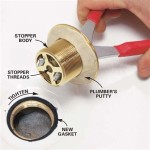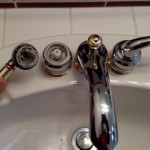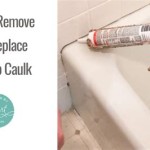What Is The Best Thing to Clean A Bathtub With?
Maintaining a clean bathtub is essential for hygiene and preserving the overall aesthetic appeal of a bathroom. However, choosing the "best" cleaning agent is not a one-size-fits-all answer. The optimal cleaning solution depends on several factors, including the type of bathtub material, the severity of the stains or buildup, and individual preferences regarding ingredients and environmental impact. Selecting the appropriate cleaning method can prevent damage to the bathtub's surface and ensure effective removal of soap scum, hard water stains, mildew, and other common bathroom grime.
This article will explore various cleaning agents and techniques suitable for different types of bathtubs, focusing on their effectiveness, safety, and potential drawbacks. By understanding the properties of various cleaning solutions, individuals can make informed decisions about the best approach for maintaining their bathtubs.
Understanding Bathtub Materials and Their Cleaning Requirements
The material composition of a bathtub significantly influences the selection of appropriate cleaning agents. Different materials possess varying degrees of resistance to chemicals and abrasives. Using the wrong cleaning product can lead to scratching, discoloration, or even structural damage.
Acrylic Bathtubs: Acrylic bathtubs are generally durable and resistant to staining, but they are susceptible to scratching. Abrasive cleaners, scouring pads, and harsh chemicals should be avoided. Mild dish soap, warm water, and a soft cloth or sponge are typically sufficient for routine cleaning. For tougher stains, specialized acrylic bathtub cleaners or a paste of baking soda and water can be used with gentle scrubbing. Always test any cleaner in an inconspicuous area first to ensure it does not damage the finish.
Porcelain Bathtubs: Porcelain bathtubs, particularly those with a cast iron base, are more robust than acrylic. However, the porcelain enamel can still be chipped or scratched by overly abrasive cleaners. While porcelain can withstand slightly harsher cleaning agents than acrylic, it's still prudent to avoid abrasive powders and metal scouring pads. A paste of baking soda and hydrogen peroxide can be effective for removing stains from porcelain bathtubs. Commercial bathroom cleaners designed for porcelain are also viable options. Rinse thoroughly after cleaning to prevent residue buildup.
Fiberglass Bathtubs: Similar to acrylic, fiberglass bathtubs are prone to scratching. Therefore, gentle cleaning methods are crucial. Avoid abrasive cleaners and harsh chemicals. A mixture of vinegar and water is often effective for cleaning fiberglass bathtubs. Commercial fiberglass cleaners are also available. Regularly waxing the fiberglass surface can help protect it from staining and make cleaning easier.
Cast Iron Bathtubs: These bathtubs are known for their durability and heat retention. Typically coated with enamel, cleaning should focus on preserving the enamel layer. Mild dish soap and water are generally effective for routine cleaning. For stubborn stains, a non-abrasive cleaner specifically designed for enamel surfaces is recommended. Avoid using harsh chemicals like bleach or ammonia, as they can dull the enamel over time.
Evaluating Cleaning Agents: Effectiveness and Safety
Numerous cleaning agents are available, each with varying degrees of effectiveness and potential risks. Understanding the properties of these agents is crucial for selecting the most appropriate option.
Commercial Bathroom Cleaners: These cleaners are formulated to remove soap scum, hard water stains, and mildew. They often contain surfactants, solvents, and antimicrobial agents. While effective, some commercial cleaners can contain harsh chemicals that may irritate the skin, eyes, and respiratory system. Always read and follow the manufacturer's instructions carefully. Ensure adequate ventilation when using these products. Consider opting for eco-friendly or "green" bathroom cleaners that utilize plant-based ingredients and are less likely to contain harmful chemicals.
Baking Soda: Baking soda is a mild abrasive and deodorizer that can be used to clean various surfaces, including bathtubs. It is particularly effective for removing soap scum and mild stains. A paste of baking soda and water can be applied to the stained area and gently scrubbed with a soft cloth or sponge. Baking soda is a safe and environmentally friendly option.
Vinegar: Vinegar, particularly white vinegar, is a natural acid that can dissolve hard water stains and soap scum. A solution of equal parts vinegar and water can be sprayed onto the bathtub surface and allowed to sit for several minutes before scrubbing. The acidic nature of vinegar can also help to kill mold and mildew. However, vinegar should not be used on natural stone surfaces, as it can etch the stone.
Hydrogen Peroxide: Hydrogen peroxide is a mild bleaching agent that can be used to remove stains and disinfect surfaces. It is effective for removing mildew and lightening stains. A paste of baking soda and hydrogen peroxide can be applied to stubborn stains and allowed to sit for several minutes before scrubbing. Hydrogen peroxide should be stored in a dark bottle, as it decomposes when exposed to light.
Dish Soap: Mild dish soap is a gentle and effective cleaning agent for routine bathtub cleaning. It is particularly effective for removing soap scum and oily residues. A small amount of dish soap can be added to warm water and used to clean the bathtub with a soft cloth or sponge. Dish soap is a safe and readily available option.
Bleach: Bleach is a powerful disinfectant and stain remover, but it should be used with caution. It can be effective for removing mold and mildew, but it can also damage certain bathtub materials and release harmful fumes. Bleach should always be diluted with water and used in a well-ventilated area. Avoid mixing bleach with other cleaning agents, particularly ammonia, as this can create toxic gases. Rubber gloves and eye protection should be worn when using bleach.
Effective Techniques for Cleaning Different Types of Stains
The type of stain present in the bathtub determines the most effective cleaning technique. Different stains require different approaches to ensure complete removal without damaging the bathtub surface.
Soap Scum: Soap scum is a common buildup of soap, body oils, and hard water minerals. It typically appears as a white or gray film on the bathtub surface. To remove soap scum, a solution of vinegar and water is often effective. Spray the solution onto the affected area, let it sit for several minutes, and then scrub with a non-abrasive sponge or cloth. Baking soda paste can also be used for more stubborn soap scum.
Hard Water Stains: Hard water stains are caused by mineral deposits left behind by hard water. They typically appear as white or yellowish crusts on the bathtub surface, particularly around faucets and drains. Vinegar is an excellent cleaning agent for hard water stains. For severe buildup, soak paper towels in vinegar and apply them to the affected area for several hours or overnight. Then, scrub with a non-abrasive sponge or cloth.
Mildew and Mold: Mildew and mold thrive in damp environments and can appear as black, green, or brown spots on the bathtub surface. To remove mildew and mold, a solution of bleach and water can be used. However, ensure adequate ventilation and protect your skin and eyes when using bleach. Alternatively, vinegar or hydrogen peroxide can be used as less harsh alternatives. Spray the cleaning agent onto the affected area, let it sit for several minutes, and then scrub with a non-abrasive brush or sponge. Regularly ventilating the bathroom can help prevent the growth of mildew and mold.
Rust Stains: Rust stains can occur if metal objects are left in the bathtub for extended periods. To remove rust stains, a paste of baking soda and lemon juice can be applied to the affected area. Let it sit for several minutes, and then scrub with a non-abrasive sponge or cloth. Commercial rust removers are also available, but be sure to choose one that is safe for the bathtub material.
Sticker Residue: Removing sticker residue from a bathtub can be challenging. Try using a mixture of baking soda and cooking oil to soften the residue. Apply the mixture to the affected area, let it sit for several minutes, and then wipe away with a cloth. Alternatively, a hairdryer can be used to warm the sticker residue, making it easier to peel off.
By understanding the specific properties of different bathtub materials, cleaning agents, and stain types, individuals can effectively clean their bathtubs while minimizing the risk of damage. Regular cleaning and maintenance are crucial for preventing the buildup of stains and ensuring the longevity of the bathtub.

How To Clean A Bathtub And Sink Reviews By Wirecutter

Bathtub Cleaner Dawn And Vinegar Success This Simple Home

The Best Way To Clean Your Shower And Tub

10 Best Shower Cleaners Of 2025 Reviewed

This Tip Takes The Pain Out Of Cleaning Your Bathtub

Best Way To Clean The Bathtub Helping Hands

The Easiest Way To Clean Your Bathtub Diy Tub Cleaner

Revealed The Best Bathroom Cleaning S Otago Daily Times News

How To Clean Tough Stains From A Bathtub 4 Easy Methods

11 Best Shower Cleaners Tested Reviewed Nbc Select
Related Posts








